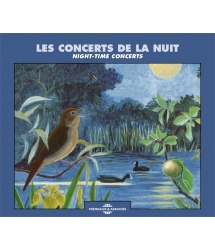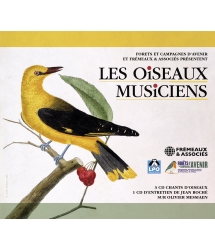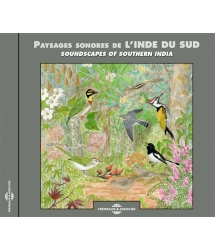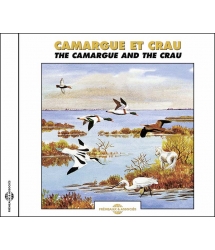- Our Catalog
- Philosophy
- Philosophers of the 20th century and today
- History of Philosophy (PUF)
- Counter-History and Brief Encyclopedia by Michel Onfray
- The philosophical work explained by Luc Ferry
- Ancient thought
- Thinkers of yesterday as seen by the philosophers of today
- Historical philosophical texts interpreted by great actors
- History
- Books (in French)
- Social science
- Historical words
- Audiobooks & Literature
- Our Catalog
- Jazz
- Blues
- Rock - Country - Cajun
- French song
- World music
- Africa
- France
- Québec / Canada
- Hawaï
- West Indies
- Caribbean
- Cuba & Afro-cubain
- Mexico
- South America
- Tango
- Brazil
- Tzigane / Gypsy
- Fado / Portugal
- Flamenco / Spain
- Yiddish / Israel
- China
- Tibet / Nepal
- Asia
- Indian Ocean / Madagascar
- Japan
- Indonesia
- Oceania
- India
- Bangladesh
- USSR / Communist songs
- World music / Miscellaneous
- Classical music
- Composers - Movie Soundtracks
- Sounds of nature
- Our Catalog
- Youth
- Philosophy
- News
- How to order ?
- Receive the catalog
- Manifesto
- Dictionnary











- Our Catalog
- Philosophy
- Philosophers of the 20th century and today
- History of Philosophy (PUF)
- Counter-History and Brief Encyclopedia by Michel Onfray
- The philosophical work explained by Luc Ferry
- Ancient thought
- Thinkers of yesterday as seen by the philosophers of today
- Historical philosophical texts interpreted by great actors
- History
- Books (in French)
- Social science
- Historical words
- Audiobooks & Literature
- Our Catalog
- Jazz
- Blues
- Rock - Country - Cajun
- French song
- World music
- Africa
- France
- Québec / Canada
- Hawaï
- West Indies
- Caribbean
- Cuba & Afro-cubain
- Mexico
- South America
- Tango
- Brazil
- Tzigane / Gypsy
- Fado / Portugal
- Flamenco / Spain
- Yiddish / Israel
- China
- Tibet / Nepal
- Asia
- Indian Ocean / Madagascar
- Japan
- Indonesia
- Oceania
- India
- Bangladesh
- USSR / Communist songs
- World music / Miscellaneous
- Classical music
- Composers - Movie Soundtracks
- Sounds of nature
- Our Catalog
- Youth
- Philosophy
- News
- How to order ?
- Receive the catalog
- Manifesto
- Dictionnary
PIERRE HUGUET
Ref.: FA664
EAN : 3448960266420
Author : 23|130
Label : PITHYS / FREMEAUX & ASSOCIES
Total duration of the pack : 1 hours 2 minutes
Nbre. CD : 1
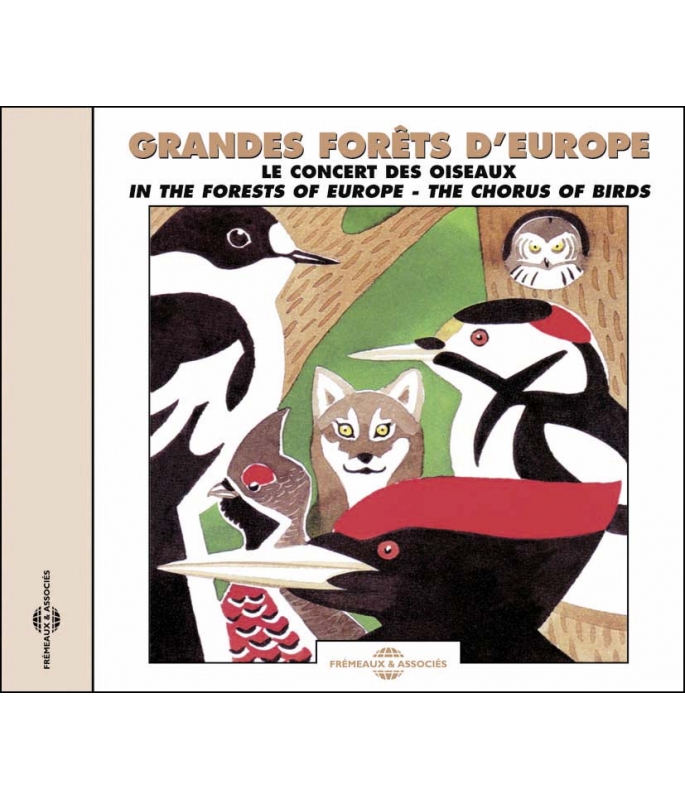
“Spring, in the last, mixed virgin forest in Europe (Bialowieza, Poland). Below the magnificent canopy formed by trees several centuries old, the resonant birdsong is magical. This concert featuring over thirty different birds and mammals will introduce you to species such as the Wolf, the Bison and the Lesser Spotted Eagle, all symbol of fast disappearing nature. A recording of Pierre Huguet, which offers in only one disc an unique and representative concert of the European virgin forest.” Patrick Frémeaux
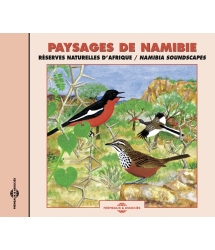
NAMIBIA SOUNDSCAPES
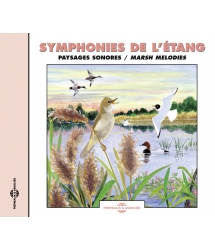
MARSH MELODIES
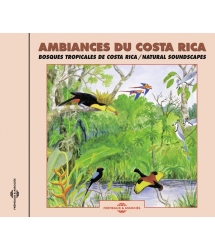
COSTA-RICA SOUNDSCAPES
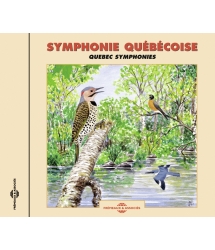
QUEBEC SYMPHONIES




-
PisteTitleMain artistAutorDurationRegistered in
-
1La grive musicienne (Song thrush 1)Pierre Huguet00:03:551235948400
-
2La grive musicienne 2 (Song thrush 2)Pierre Huguet00:00:161235948400
-
3Un cerf elaphe (Elaph stag)Pierre Huguet00:03:251235948400
-
4Le coucou gris (Robin)Pierre Huguet00:01:241235948400
-
5Orage dans la forêt de Bialowieza (Storm in the forest of Bialowieza)Pierre Huguet00:00:491235948400
-
6Les pinsons des arbres (Chaffinch)Pierre Huguet00:02:501235948400
-
7Le troglodyte mignon (Wren)Pierre Huguet00:00:281235948400
-
8Gobemouche a collier (Collared flycatcher)Pierre Huguet00:00:231235948400
-
9Troglodyte mignon (Wren 2)Pierre Huguet00:02:241235948400
-
10Pic vert (Green woodpecker)Pierre Huguet00:00:251235948400
-
11Pics epeiches (Great spotted wood pecker)Pierre Huguet00:01:451235948400
-
12Pigeon ramier (Woodpigeon)Pierre Huguet00:00:401235948400
-
13Pic noir (Black woodpecker)Pierre Huguet00:01:201235948400
-
14Pinson des arbres (Chaffinch)Pierre Huguet00:00:301235948400
-
15La gelinotte des bois (Hazel hen)Pierre Huguet00:01:091235948400
-
16Pinson des arbres 2 (chaffinch 2)Pierre Huguet00:00:201235948400
-
17Geai des chenes (Jay 1)Pierre Huguet00:01:491235948400
-
18Pic noir (Black woodpecker)Pierre Huguet00:01:431235948400
-
19Le geai des chenes (Jay 2)Pierre Huguet00:00:491235948400
-
20Aigle pomarin (Lesser spotted eagle)Pierre Huguet00:01:491235948400
-
21Gobemouche a collier (Collared flycatcher)Pierre Huguet00:00:431235948400
-
22Pouillot siffleur (Wood warbler)Pierre Huguet00:03:111235948400
-
23Gelinotte des bois (Hazel hen)Pierre Huguet00:03:011235948400
-
24Pic à dos blanc (White-backed woodpecker)Pierre Huguet00:00:371235948400
-
25Pouillot veloce 1 (Chiffchaff)Pierre Huguet00:00:241235948400
-
26Pigeon ramier (Woodpigeon)Pierre Huguet00:02:031235948400
-
27Pouillot veloce 2 (Chiffchaff 2)Pierre Huguet00:00:411235948400
-
28Troglodyte mignon (Wren)Pierre Huguet00:03:001235948400
-
29Bouvreuil pivoine 1 (Bullfinch 1)Pierre Huguet00:02:431235948400
-
30Bouvreuil pivoine 2 (Bullfinch 2)Pierre Huguet00:01:021235948400
-
31Bouvreuil pivoine 3 (Bullfinch 3)Pierre Huguet00:01:161235948400
-
32Coucou gris 1 (Cuckoo 1)Pierre Huguet00:00:231235948400
-
33Coucou gris 2 (Cuckoo 2)Pierre Huguet00:02:011235948400
-
34Mesanges à longue queue (Long tailed tits)Pierre Huguet00:00:401235948400
-
35Pigeon ramier (Woodpigeon)Pierre Huguet00:01:411235948400
-
36Pic zepeichette (Lesser spotted woodpecker)Pierre Huguet00:02:271235948400
-
37Troglodyte mignon (Wren)Pierre Huguet00:03:461235948400
-
38Pinson des arbres 3 (Chaffinch 3)Pierre Huguet00:01:151235948400
-
39Chouette de chevechette (Pygmy Owl)Pierre Huguet00:00:091235948400
-
40Les loups (Wolves)Pierre Huguet00:01:181235948400
-
41Becasse des bois 2 (Woodcock 2)Pierre Huguet00:00:271235948400
-
42Chouette chevechette (Pygmy owl)Pierre Huguet00:00:451235948400
-
43Becasses des bois 3 (Woodcock 3)Pierre Huguet00:00:331235948400
grandes forêts d’europe
grandes forêts d’europe
LE CONCERT DES OISEAUX
In the forests of europe - the chorus of birds
Ecouter le concert des oiseaux dans la forêt primaire de Bialowieza est un voyage dans l’histoire : il y a quelques siècles encore, la majeure partie de l’Europe résonnait ainsi. C’est aussi une partition complexe dont la structure même n’est toujours pas complètement déchiffrée. Si chaque oiseau, autrement dit chaque instrument, est parfaitement connu, la manière dont il règle son chant par rapport aux autres n’est toujours pas mise en évidence. Tout ce que l’on peut dire, c’est que chaque forêt a son timbre, son tempo, ses solistes. Celle de Bialowieza est remarquable par deux éléments essentiels : l’extrême variété des espèces (la plus grande que j’ai rencontrée à ce jour dans une forêt européenne) et l’amplitude de la résonance. La journée qui est reproduite dans cet album respecte la chronologie qui se déroule au début du mois de mai. Elle se situe à l’intersection des trois tendances forestières qui marquent le massif de Bialowieza (forêt inondée - chênaie/charmaie - forêt de conifères).
1&2 - La Grive musicienne (Turdus philomelos) marque traditionnellement avec le Rouge-gorge le passage entre la nuit et le jour, mais deux Chouettes hulottes continuent leur hululement jusqu’au lever du soleil.
3 - Un Cerf élaphe (Cervus elaphus) (aboiement sonore) a senti la présence d’un Bison d’Europe (grognement sourd). Par cette communication interspécifique, ces deux grands mammifères signalent leur présence respective l’un envers l’autre et évitent ainsi qu’une proximité fortuite ne trouble leur quiétude. Pour une oreille avertie, le Rouge-gorge familier a beaucoup de peine à faire “émerger” son chant parmi ceux des Grives musiciennes. Pourtant, les autres espèces de la forêt sont encore presque toutes muettes à cette heure encore très matinale.
4 - Lorsque le jour est franc mais le soleil encore caché, le Coucou gris (Cuculus canorus), puis très vite le Merle noir et le Troglodyte, se joignent au concert des oiseaux.
5 - Par sa position géographique déjà très orientale en Europe, la forêt de Bialowieza connaît un climat continental assez marqué. Les orages sont fréquents, même tôt le matin de mai à septembre.
6 - Le Pinson des arbres (Fringilla cœlebs) ne chante qu’une fois le soleil levé. C’est l’oiseau le plus fréquent dans les forêts d’Europe centrale.
7 - Bien qu’étant l’un des plus petits oiseaux de la forêt, le Troglodyte mignon (Troglodytes troglodytes) possède l’une des voix les plus fortes que l’on puisse y entendre.
8 - Les petits “sij, sij, sij” plaintifs sont les cris d’inquiétude, voire d’alarme, du Gobemouche à collier (Ficedula albicollis). Petit oiseau insectivore et migrateur, il niche dans les nombreuses cavités naturelles offertes par les vieux arbres et les anciens trous de pics.
9 - Chant territorial d’un Troglodyte mignon (Troglodytes troglodytes).
10 - Le chant d’un Pic vert (Picus viridis) résonne comme l’une des manières communes aux pics pour marquer leur territoire. Le tambourinage en est une autre.
11 - Ici deux Pics épeiches (Dendrocopos major) s’affrontent aux limites de leurs domaines mitoyens et tambourinent très près l’un de l’autre. Au loin, un Pic noir (moins sonore mais plus long). Le timbre des percussions n’est pas propre aux espèces mais résulte plutôt de l’état de la branche ou du tronc qui est frappé (vert, sec ou plus ou moins décomposé). Seul le rythme et le nombre des coups donnés permet de différencier les pics entre eux à distance.
12 - L’orage est passé, le ciel nettoyé laisse passer le soleil. On constate souvent une légère inflection dans le concert matinal des oiseaux à l’occasion de ces premiers rayons. Lorsque les premiers intervenants de la matinée deviennent plus discrets, le Pigeon ramier (Columba palumbus) commence alors à roucouler.
13 - Ces appels plaintifs sont propres au Pic noir (Dryocopus martius), mais les tambourinages sont ici d’un Pic épeiche. En pleine journée, l’essentiel des chants de la forêt sont dus aux Pinsons des arbres et aux Troglodytes mignons.
14 - L’alarme du Pinson des arbres (Fringilla cœlebs), “puit, puit, puit…” est déclenchée par l’arrivée d’un Geai des chênes.
15 - La Gélinotte des bois (Tetrastes bonasia) possède une voix qui passe souvent inaperçue bien qu’elle soit assez puissante. C’est un “tiiiiiii, tiiiiiii, ti, ti, ti, tit” monocorde mais très aigu. Les miaulements de buse que l’on entend après le 3ème appel de la Gélinotte sont en fait une imitation du Geai, ce qui provoque l’alarme d’un Pinson.
16 - Alarme du Pinson des arbres (Fringilla cœlebs). Troglodyte, Coucou, Pouillot siffleur et Gélinotte se distinguent bien en arrière-plan dans le sous-bois.
17 - Ce même Geai des chênes (Garrulus glandarius) imite à présent en second plan une partie des vocalisations du Grand Corbeau.
18 - Pic noir (Dryocopus martius) très proche.
19 - Le Geai des chênes (Garrulus glandarius) imite à présent les cris de contacts propres à l’Autour des palombes, un redoutable rapace forestier… très friand de Geais ! Cherche-t-il à intimider l’aigle qui vient ?
20 - Un Aigle pomarin (Aquila pomarina) arrive près de son aire.
21 - Alarme d’un Gobemouche à collier (Ficedula albicollis) : “sij, sij, sij,…”.
22 - Le chant du Pouillot siffleur (Phylloscopus sibilatrix) se reconnaît par la brusque accélération de sa trille. Une cinquantaine de secondes plus loin, on distingue le Pouillot véloce et même le chant du Tarin des aulnes.
23 - A la mi-journée, derniers chants de la Gélinotte des bois (Tetrastes bonasia). Elle est accompagnée ici par de nombreuses autres espèces comme le Merle noir, le Pinson des arbres, le Gobemouche noir et les Pics épeichettes et tridactyles (tambourinages).
24 - Cris nerveux d’un Pic à dos blanc (Dendrocopos leucotos) près de son nid. Une oreille exercée décèlera aussi les cris des jeunes qui réclament leur nourriture.
25 - Chant très rythmé d’un Pouillot véloce (Phylloscopus collybita).
26 - Pigeon ramier (Columba palumbus).
27 - Le chant du Pouillot véloce (Phylloscopus collybita) est l’un des plus facile à retenir parmi les oiseaux de la forêt.
28 - En second plan, mêlés aux strophes vives du Pinson des arbres, les chants discrets du Grimpereau des bois et tonitruants du Troglodyte mignon (Troglodytes troglodytes).
29 - Le chant nuptial du Bouvreuil pivoine (Pyrrhula pyrrhula) demeure très ténu et devient pratiquement inaudible à plus de 5 mètres. Ici, le mâle chanteur n’est qu’à quelques dizaines de centimètres des micros ! Tambourinages puissants d’un Pic noir en arrière-plan.
30 & 31 - Ces sifflements brefs et plaintifs sont l’autre expression vocale du Bouvreuil pivoine (Pyrrhula pyrrhula), en fait des cris de contact assurant la cohésion du couple dans les bosquets denses.
32 - En fin de journée, l’activité vocale des Coucou gris (Cuculus canorus) reprend. Ici, chant d’un mâle.
33 - L’appel d’une femelle de Coucou gris (Cuculus canorus) est reconnaissable à ce gloussement liquide et nerveux. Juste après cet oiseau, le mâle excité pousse des “frou fro fra, frou, frou, frou” plutôt sourds.
34 - D’abord assez lointaine, deux Mésanges à longue queue (Aegithalos caudatus) se rapprochent. Un Roitelet huppé est également discernable.
35 - Le soleil est maintenant couché mais la lumière est encore franche. Un Pigeon ramier (Columba palumbus) se mêle aux Pinson des arbres, Gobemouche noir, Rouge-gorge et Pouillot véloce.
36 - Tambourinage de Pic épeichette (Dendrocopus minor), le plus petit des Pics.
37 - Le chant d’un Troglodyte mignon (Troglodytes troglodytes) couvre celui d’une Grive musicienne qui se manifeste à l’approche de la nuit.
38 - Un Pinson des arbres (Fringilla cœlebs) vif et sonore masque une Mésange bleue.
39 - Crépuscule, moment ou l’équilibre entre la lumière et la nuit est indéfinissable. De nombreux Passereaux chantent encore, et dans ce concert vient alors se mêler la Chouette chevêchette (Glaucidium passerinum), le plus petit rapace nocturne européen, à peine plus fort qu’un Moineau ! Son chant flûté répétitif est monotone. Comme les autres espèces cavernicoles, elle profite des anciennes loges de Pics.
40 - Les loups (canis lupus) ont failli disparaître du massif de Bialowieza, et une dizaine persisterait aujourd’hui. Les trois individus qui appellent ici de concert n’obtiennent pas de réponses. La protection totale dont ils jouissent désormais permettra-t-elle à la forêt de garder cette polyphonie empreinte de mystère et de grandeur envoûtante ?
41 - Des séries de petits grognements éternués traversent le ciel presque noir à présent : la Bécasse des bois (Scolopax rusticola) quadrille son territoire en volant dans la pénombre.
42 - La petite Chouette chevêchette (Glaucidium passerinum) se mêle aux deux dernières Grives musiciennes de ce jour.
43 - Ultime passage de la Bécasse des bois (Scolopax rusticola).
Répertoire alphabétique des espèces audibles dans ce concert et index des indices.
Les indices d’accès direct sont indiqués en gras, alors qu’en italique sont présentés les indices des plages sonores où l’espèce apparaît postérieurement en arrière-plan.
Oiseaux
Aigle pomarin, Aquila pomarina : 20.
Bécasse des bois, Scolopax rusticola : 41, 43.
Bouvreuil pivoine, Pyrrhula, pyrrhula : 29, 30, 31.
Chouette chevêchette, Glaucidium passerinum : 39, 42.
Chouette hulotte, Strix aluco : 2.
Coucou gris, Cuculus canorus : 4, 16, 32, 33.
Geai des chênes, Garrulus glandarius : 15, 16, 19.
Gélinotte des bois, Tetrastes bonasia : 15, 16, 23.
Gobemouche à collier, Ficedula albicollis : 8, 21.
Gobemouche noir, Ficedula hypoleuca : 23, 35.
Grimperau des bois, Certhia familiaris : 28.
Grive musicienne, Turdus philomelos : 1, 2, 3, 37.
Merle noir, Turdus merula : 4, 23.
Mésange à longue queue, Aegithalos caudatus : 34.
Mésange bleue, Parus caeruleus : 38.
Pic à dos blanc, Dendrocopos leucotos : 24.
Pic épeiche, Dendrocopos major : 11, 13.
Pic épeichette, Dendrocopos minor : 23.
Pic noir, Dryocopus martius : 11, 13, 18, 29.
Pic tridactyle, Picoides tridactylus : 23.
Pic vert, Picus viridis : 10.
Pigeon ramier, Columba palumbus : 12, 26, 35.
Pinson des arbres, Fringilla cœlebs : 6, 13, 14, 16, 23, 28, 35, 38.
Pouillot siffleur, Phylloscopus sibilatrix : 16, 22.
Pouillot véloce, Phylloscopus collybita : 22, 25, 27, 35.
Roitelet huppé, Regulus regulus : 34.
Rouge-gorge familier, Erithacus rubecula : 3, 35.
Tarin des aulnes, Carduelis spinus : 22.
Troglodyte mignon, Troglodytes troglodytes : 4, 7, 9, 13, 16, 28, 37.
Mammifères
Bison d’Europe, Bison bonasus : 3.
Cerf élaphe, Cervus elaphus : 3.
Loup d’Europe, Canis lupus : 40.
Pierre HUGUET
© 1992 Pithys - 2008 FRÉMEAUX & ASSOCIÉS
Un peu d’histoire - La forêt de Bialowieza
Au XIIIème siècle les Tartares envahissent l’Est de la Pologne actuelle et le site de Bialowieza a été vidé de sa population. Seuls quelques Tumulis témoignent de la présence d’une civilisation qui a disparu à cette époque. Un grand massif forestier s’est alors rétabli, hors de l’influence de l’homme, sur une surface de 15 000 km2. Les statuts de “Chasse des Rois de Pologne”, puis de “Forêt du Tsar”, ont soustrait une partie du massif de la pression de l’homme. En 1921, une réserve fut créée puis, en 1947, l’UNESCO l’inscrivait comme “Réserve de la Biosphère”. En 1992, date de l’enregistrement, les 1250 km2 que se partagent la Bélarus (670) et la Pologne (580) constituent un bel exemple mixte peu transformé. 47 km2 situés en Pologne peuvent être considérés comme le dernier exemple de forêt primaire de cette latitude en Europe. Une protection très stricte évite toute prédation et importation d’origine humaine. Au-delà du joyau naturel qu’elle représente, il faut y voir aussi un indicateur biologique unique en Europe dont le pouls bien observé peut être un révélateur de l’état de santé de l’ensemble du continent. Comme ses sœurs équatoriales, la forêt primaire de Bialowieza est très riche en espèces. Chacune d’entre elles n’étant par contre représentée que par peu d’individus. 62 espèces de ma mmifères, 228 d’oiseaux, 8500 insectes et 4000 de plantes ; ces chiffres sont le reflet d’une remarquable diversité et les noms de Lynx, Bison, Loup, Grand Tétras, Chouette chevêchette, Aigle pomarin sont le reflet de cette rareté exceptionnelle. Cette forêt peut se visiter sans aucune difficulté. Sa partie périphérique est accessible sans aucune autorisation, elle est parcourue par de grands layons dont certains sont carrossables. Une carte très détaillée est disponible sur place. La réserve intégrale est soumise à autorisation, on ne la pénètre qu’à pied ou en calèche à cheval. Des visites commentées sont organisées par la Maison du Parc ; elles permettent de voir les monuments de la forêt : Epicéas de plus de 50 m de haut, Tilleuls et Chênes de plus de 40 m… Mais elles permettent aussi de comprendre et d’observer les divers stades de la colonisation forestière qui se succèdent après les chablis occasionés par les tornades. Personne n’échappe aux sensations qu’elle suscite. Spécialiste ou non, vous y ressentirez des émotions puissantes de mystère pour les uns ou de sérénité pour les autres. C’est un voyage dans le temps que vous y ferez en retrouvant l’un des paysages qui a couvert notre continent pendant la majeure partie de son histoire.
english notes
To listen to the concert of bird song in the primeval forest of Bialowieza is to journey through time. A few centuries ago the majority of Europe sounded like this. In addition it represents a complex partition whose structure has never been completely unravelled. Though each bird, or instrument, as been accurately identified, the manner in which it harmonises its song with the others remains a mystery. All that one may be sure of, is that each forest has its own sound, tempo and soloists. The Bialowieza forest is remarkable for two essential reasons : the huge variety of species (the most that I have encountered in a European forest) and the range of resonance. The album follows the chronology of a day at the beginning of May. It marks the intersection between the three types of habitat which are typical of the Bialowieza forest (flooded forest - oak and hornbeam woods - pine forest). Names entered in bold characters correspond to the first song to be heard when a new number (1 to 45) is displayed on the CD player.
1&2 - The Song Thrush (Turdus philomelos) and the Robin traditionally mark the passage between night and day, but two Tawny Owls continue hooting until the sun rises.
3 - A Elaph Stag (Cervus elaphus) (loud barking) has scented the presence of a European Bison (dull growling). This burst of inter-species communication enables the two great mammals to signal their presence to each other, thus avoiding the risk of disturbing their peace by a chance encounter.
4 - The Robin (Erithacus rubecula) has considerable difficulty in making his song heard amongst the Song Thrushes, despite the fact that the majority of other forest species are still silent at such an early hour. Day has broken completely but the sun is still hidden as the Cuckoo (Cuculus canorus), soon followed by the Blackbird and the Wren, join the bird concert.
5 - On account of its geographical situation in the eastern part of Europe, the forest of Bialowieza has a distinctly continental climate. Storms are frequent, even early in the morning, from May to September.
6 - The Chaffinch (Fringilla cœlebs) only sings once the sun has risen. It is the commonest bird in the forests of central Europe.
7 - Although it is one of the smallest birds in the forest, the Wren (Troglodytes troglodytes) has one of the most powerful voices that one may hear.
8 - The feeble, plaintive “sij, sij, sij” are cries, expressing worry or even alarm, made by the Collared Flycatcher (Ficedula albicollis). This little insect eating, migratory bird nests in the many natural cavities to be found in old trees or in old woodpecker holes.
9 - Wren’s territorial song (Troglodytes troglodytes).
10 - The song of a Green Woodpecker (Picus viridis) can be heard. It represents one of the commonest ways for woodpeckers to mark their territory. Drumming is another technique.
11 - Here, two Great Spotted Woodpeckers (Dendrocopos major) face off on the border between their territories, drumming very close to one another ; in the distance, a Black Woodpecker (not so loud but longer). The pitch of drumming is not specific to a species but depends on the state of the branch or tree trunk which is struck (green, dry or more less rotten). Only the rhythm and the number of blows enables the listener to distinguish woodpeckers from a certain distance.
12 - The storm has passed and the clear sky welcomes the sun. There is a slight lull in the birds’ morning concert as the first rays of the sun appear. As the first performers in the morning’s festivities fall silent the Woodpigeon (columba palumbus) stars to coo.
13 - The plaintive calls belong to the Black Woodpecker (Dryocopus martius), but the drumming comes from a Great Spotted Woodpecker. In the middle of the day most of the bird song is produced by Chaffinches and Wrens.
14 - Chaffinch (Fringilla cœlebs), alarm calls, “puit, puit, puit…” triggered by the arrival of a Jay.
15 - The Hazel Hen (Tetrastes bonasia) has a voice which often goes unnoticed, despite being fairly powerful - a monotonous, highpitched “tiiiiiii, tiiiiiii, ti, ti, tit”. The mewing of a buzzard heard after the Hazel Hen’s third call is in fact an imitation of a Jay, which alarms a Chaffinch.
16 - Chaffinch (Fringilla cœlebs) alarm call. A Wren, Cuckoo, Wood Warbler and Hazel Hen can be distinguished in the background of the undergrowth.
17 - The same Jay (Garrulus glandarius) is now heard imitating part of the cry of a Raven.
18 - Black Woodpecker (Dryocopus martius) very close.
19 - This time a Jay (Garrulus glandarius) is imitaing the contact cries particular to the Goshawk, a formidable forest raptor… with an appetite for Jay! Is it trying to intimidate the eagle, about to appear?
20 - A Lesser Spotted Eagle (Aquila pomarina) returning to its eyrie.
21 - Alarm call by a Collared Flycatcher (Ficedula albicollis): “sij, sij, sij,…”
22 - The song of the Wood Warbler (Phylloscopus sibilatrix) can be recognised by the sudden acceleration of its trilling. About fifty seconds later one can hear a Chiffchaff and even the song of the Siskin.
23 - At midday the last sounds from the Hazel Hen (Tetrastes bonasia). It is accompanied by numerous other species, such as the Blackbird, Chaffinch, Pied Flycatcher and Lesser Spotted and Three-toed Woodpeckers (drumming).
24 - Nervous cries from a White-backed Woodpecker (Dendrocopos leucotos) close to its nest. A trained ear will also detect the cry of the young, demanding food.
25 - Vrey rhythmic song of a Chiffchaff (Phylloscopus collybita).
26 - Woodpigeon (Columba palumbus).
27 - The song of the Chiffchaff (Phylloscopus collybita) is one of the easiest to remember among the forest birds.
28 - In the bakground, mixed to the lively song of the Chaffinch, the more discreet call of the Treecreeper and the powerful sound of the Wren (Troglodytes troglodytes).
29 - The mating song of the Bullfinch (Pyrrhula pyrrhula) is distinctly feeble and becomes almost inaudible at a distance of over 5 metres. Here, the male singer is only twenty or thirty centimetres from the microphones! Powerful drumming by a Black Woodpecker in the background.
30 & 31 - The brief, plantive whistling represents the other form of vocal expression used by the Bullfinch (Pyrrhula pyrrhula). They are in fact contact calls designed to maintain links between the couple in the dense thickets.
32 - At the end of the day the vocal activity of the Cuckoo (Cuculus canorus) picks up again. Here a male is singing.
33 - The call of a female Cuckoo (Cuculus canorus) can be recognised by the smooth, nervous clucking. Just afterwards, the excited male makes a series of dull “frou fro fra, frou, frou, frou”.
34 - Coming from quite far away, two Longtailed Tits (Aegithalos caudatus) approach. A Goldcrest can also be heard.
35 - The sun has set but the light is still bright. A Woodpigeon (Columba palumbus) joins the Chaffinch, Pied Flycatcher, Robin and Chiffchaff.
36 - Drumming by the Lesser Spotted Woodpecker (Dendrocopus minor), the smallest Woodpecker.
37 - The song of a Wren (Troglodytes troglodytes) covers a Song Thrush which starts to sing as night falls.
38 - A noisy, lively Chaffinch (Fringilla cœlebs) masks a Blue Tit.
39 - Dusk, the moment when the balance between light and darkness is indefinable. Numerous passeriformes are still singing. The concert is joined by a Pygmy Owl (Glaucidium passerinum), the smallest nocturnal European raptor, scarcely more audible than a Sparrow! Its repetitive flute-like song is monotonous. In the same way as other cave-dwelling species, it also uses holes previously inhabited by woodpeckers.
40 - The Wolves (canis lupus) almost disappeared from the Bialowieza range, but about ten have survived. The three individuals heard calling together do not receive a reply. Will the complete protection which they now enjoy enable the forest to preserve this polyphonic sound, full of mystery and haunting greatness?
41 - Series of stifled groans cross the sky, now almost completely dark : the Woodcock (Scolopax rusticola) patrols its territory flying through the dusk.
42 - The little Pygmy Owl (Glaucidium passerinum) joins the day’s last Song Thrushes.
43 - Final passing of the Woodcock (Scolopax rusticola).
List, in alphabetical order, of all the species which may be heard during the concert and index of reference numbers. Direct access reference numbers are marked in bold characters. Those marked in italics refer to tracks where the species appears in second place or in the background.
Birds
Black Woodpecker, Dryocopus martius: 11, 13, 18, 29.
Blackbird, Turdus merula: 4, 23.
Blue Tit, Parus caeruleus: 38.
Bullfinch, Pyrrhula, pyrrhula: 29, 30, 31.
Chaffinch, Fringilla cœlebs: 6, 13, 14, 16, 23, 28, 35, 38.
Chiffchaff, Phylloscopus collybita: 22, 25, 27, 35.
Collared Flycatcher, Ficedula albicollis: 8, 21.
Cuckoo, Cuculus canorus: 4, 16, 32, 33.
Goldcrest, Regulus regulus: 34.
Great Spotted Woodpecker, Dendrocopos major: 11, 13.
Green Woodpecker, Picus viridis: 10.
Hazel Hen, Tetrastes bonasia: 15, 16, 23.
Jay, Garrulus glandarius: 15, 16, 19.
Lesser Spotted Eagle, Aquila pomarina: 20.
Lesser Spotted Woodpecker, Dendrocopos minor: 23.
Longtailed Tit, Aegithalos caudatus: 34.
Pied Flycatcher, Ficedula hypoleuca: 23, 35.
Pygmy Owl, Glaucidium passerinum: 39, 42.
Robin, Erithacus rubecula: 3, 35.
Siskin, Carduelis spinus: 22.
Song Thrush, Turdus philomelos: 1, 2, 3, 37.
Tawny Owl, Strix aluco: 2.
Three-toed Woodpecker, Picoides tridactylus: 23.
Treecreeper, Certhia familiaris: 28.
White-backed Woodpecker, Dendrocopos leucotos: 24.
Woodcock, Scolopax rusticola: 41, 43.
Woodpigeon, Columba palumbus: 12, 26, 35.
Wood Warbler, Phylloscopus sibilatrix: 16, 22.
Wren, Troglodytes troglodytes: 4, 7, 9, 13, 16, 28, 37.
Mammals
European Bison, Bison bonasus: 3.
Elaph Deer, Cervus elaphus: 3.
European Wolf, Canis lupus: 40.
Pierre HUGUET
© 1992 Pithys - 2008 FRÉMEAUX & ASSOCIÉS
english notes
About the forest of Bialowieza
In the 13th century the Tartars invaded the eastern part of what is now the Poland and the aera around Bialowieza was emptied of all population. Tumuli bear witness to the civilisation which disappeared at the time. A large area of forest re-established itself, spreading over an area of 15,000 square kilometres. By royal statute it became the “Hunting ground of the Kings of Poland” and later “Forest of the Tsar” and was thus protected from man’s influence. In 1921 a reserve was created and then in 1947 UNESCO made it into a “Biosphere Reserve”. In 1992 it covers a total of 1,250 square kilometres, shared between Belorussia (670) and Poland (580) constituting a fine example of a mixed habitat which is almost unchanged. Forty-seven square kilometres, situated in Poland, may be considered as the last example of primeval forest at this latitude in Europe. Strict, protective rules prevent any predatory acts by man or any form of importation. Apart from being a natural jewel, the forest also acts a biological measuring rod, which is unique in Europe; careful observation provides an indication of the state of health of the entire continent. Like its equatorial sisters, the Bialowieza primeval forest is rich in different species, though each one is only represented by a few individuals. 62 mammal species, 228 bird, 8500 insect and 4000 plant species; these figures reflect the remarkable diversity present here. Names such as Lynx, Bison, Wolf, Capercaillie, Pygmy Owl, or Lesser Spotted Eagle indicate the extreme rarity of some of the species. It is easy to visit the forest. The outer part, which is crossed by tracks - some open to vehicles - can be entered without any form of permit. An extremely detailed map can be purchased locally. A permit is required in order to visit the whole of the reserve itself and you may only enter on foot or in a horse-drawn carriage. The Park headquarters organises guided visits showing the forest’s monuments: fir trees over 50 metres high, lime trees and oaks of over 40 metres, and so on. The visits also help to observe and understand the various stages of forest re-colonisation, after trees are felled by tornadoes. No one, Whether a specialist or a layman, is unaffected by the feeling which the forest awakes; a sense of mystery for some, serenity for others. In both cases you will take a journey through time to a landscape which covered our continent for most of its history.
Enregistrements, textes & montage : Pierre Huguet, API - 1991.
Conseillers scientifiques sur place : Ludwig Tomialok (professeur et vice-directeur du Muséum d’Histoire Naturelle de l’Université de Wroclow) et Czeslaw Okolow (professeur et directeur du Parc National de Bialowieza)
Déterminations spécifiques : Ludwig Tomialok, Pierre Huguet, Bruno Veillet, Jean-Marc Coquelet, François Savin, et Olivier Tostain.
Illustrations : Alexis Nouailhat.
Maquette et adaptation des textes : Olivier Tostain.
Remerciements à Messieurs Sylvain Cordier et Daniel Dequiedt.
Recording, texts & editing: Pierre Huguet, API - 1991.
Local scientific consultants: Ludwig Tomialok (Professor and Assistant Director of the Museum of Natural History at the University of Wroclow) and Czeslaw Okolow (Professor and Director of the Bialowieza National Park)
Specific identification: Ludwig Tomialok, Pierre Huguet, Bruno Veillet,
Jean-Marc Coquelet, François Savin, et Olivier Tostain.
Illustrations: Alexis Nouailhat.
Design and test adaptation: Olivier Tostain.
Our thanks to Sylvain Cordier and Daniel Dequiedt.
CD grandes forêts d’europe - LE CONCERT DES OISEAUX © Frémeaux & Associés / Droits audio : Frémeaux & Associés - La Librairie Sonore (Producteur initial : Sittelle, Pithys, Collection Allain Bougrain Dubourg ou Ceba) / Ecouter les chants d'oiseaux sur CD : Sons et ambiances naturelles des écosystèmes - Stéreo and digital recording of the natural landscape sound. Natural sound sceneries of écosystems, Voices of the Wild Life. Les droits de cet enregistrement sont protégés par la loi. Pour toute exploitation d’illustration sonore sur CD, DVD, CD-Rom, Télévision, Cinéma, Sites internet, scénographies (théâtre, musées…), l’autorisation et un devis gratuit peuvent être obtenus auprès de Frémeaux & Associés – fax : +33 (0)1 43.65.24.22 info@fremeaux.com
